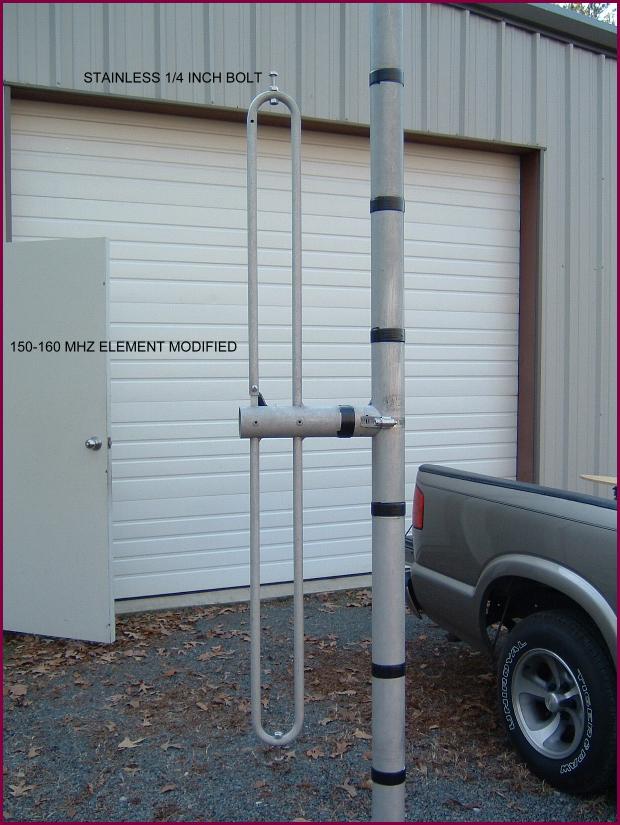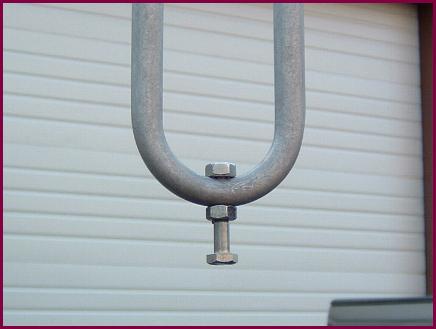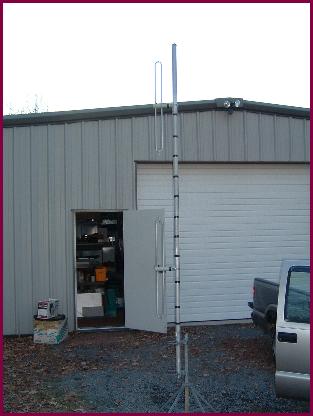
[This is an archived copy - the original is no longer available online at http://www.w4dex.com/kc4fwc - original author KC4WC]
Modify a 150-160 MHz DB-222 or DB-224 for the ham band
I have had bunches of DB-222, DB-224 and DB-264's (150-160 MHz) for quite some time but have been reluctant to use them on 2 meters below 147 MHz because the VSWR wasn't all that great. Seems like I saw 25 W forward and about 4 watts reflected at 145 MHz! I did some gain tests in the clear with a Hustler G7-144. This is what I found.
At 100 feet out the top of a tower about 27 miles east of Charlotte, NC, I mounted a Hustler G7-144 which was tuned for 146.0 MHz and used several signals in the Charlotte area up and down the ham band and made measurements in dBm with a service monitor. The antenna was later replaced with a Decibel DB-264 (150-160 MHz) un-modified and the same signals were measured. All signals were within 0.1 dB of the Hustler G7-144 (which in all practical theory has about 4.0 dB gain over a 1/2 wave dipole). Tests were done within about 2 hours of each other on a dry windy day (don't think any propagation changes occured to distort the readings..)
The antenna was then taken down and modified as shown below, then put back up, and the same test run. I picked up on average 1.5 to 2.0 dB in the ham band and the VSWR was much better. This time, at 145 MHz I ran 25 watts into the antenna and got about 1.0 reflected (this is with the watt meter directly attached to the antenna - no feedline to compensate for)..

I have heard that adding "whiskers" to antenna elements will change their resonant frequency but didn't know if it was more effective than actually cutting the tube and physically extending the elements. This simple mod made the VSWR much better. Later, I found out that Phelps-Dodge actually used this method to customize folded dipoles - and it works.
This is a stainless bolt 1/4 inch and extends the element about 3/4 inch on each end. No matter how much I adjusted the length of the bolt, I could never achieve a perfect match obviously because the phasing harness was still a little short. I still got below a 1.5:1 match down to 145.0 MHz which was impossible without the mod.
A better way to do this mod is by using a small strip of aluminum, about the thickness of an old license plate. Make the strip about 3 inches long by about 1/2 inch wide. Clean the dipole elements with steel wool at the curve (where the bolt is in the picture) and clean the aluminum strip. Bend one side of the strip all the way around the element then put a small stainless bolt through the strip, clamping it down on the antenna. This will prevent drilling the holes which can weaken the antenna element. More pic's coming soon.

